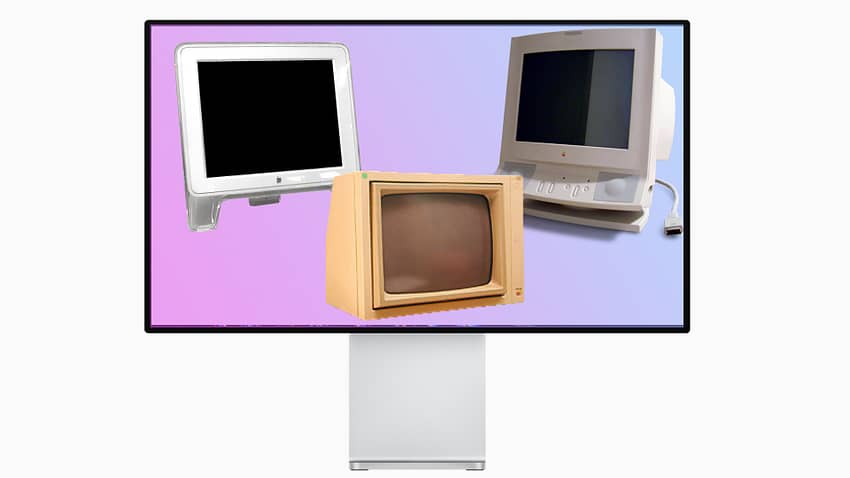Apple has always delivered great displays as part of their desire to control the entire user experience. Back to the first Macintosh, released back in 1984, Apple has made a point of integrating a high quality display into its computing products.
Apple continued that tradition through the various incarnations of its laptop lines through the PowerBook, iBook and various MacBook variations as well as with the iMac and eMac (remember that one?).
There have also been various standalone displays with the Monitor II made for the Apple II, the AppleColor for the Apple IIGS through to the flat panel displays typically dubbed Studio Display, Cinema Display. Or more recently Pro Display.
Along the way, we’ve had different display connectors with VGA, ADC, DVI, mini-DisplayPort, HDMI and USB-C all coming along.
Today there’s news, from Bloomberg’s Mark Gurman, that Apple is working on a new Studio Display – presumably to pair up with the incredibly popular new Mac mini and the anticipated update to the Mac Studio. Interestingly, Apple’s premium display, the Pro Display XDR is now six years old and seemingly relegated to the same scrap heap as the iPod Hi-Fi and other one-and-done Apple products.
Apple will maintain development and production of display technology for as long as it ships devices with displays. That investment is critical to the success of its laptops, iPhone, iPad and iMac product lines. But why it bothers with a standalone display is a mystery.
The third party display market is massive and offers far more variety than Apple can manage. For example, I’m using a 45-inch widescreen display from Lenovo on a disk mount that enables me to adjust height and tilt easily.
It may not have the full Apple aesthetic but it has thin bezels, a nice crisp picture delivered at at refresh rate of 165Hz over DisplayPort and means I can view enough content for writing and researching without having to manage multiple displays. I settled for a HD display as I find 4K makes things a little too small for my eyes so I’d end up changing a bunch of settings to make things big enough for me.
While Apple’s Studio is a 5K display with nice built in speakers and a great webcam, these are relatively simply shortcomings for me to fix. I have a HD webcam from Logitech and a couple of good-enough-for-me speakers sitting on small wall mounted shelves.
That entire set up cost me about $1400. In contrast, An Apple Studio display starts at $2499. While it boasts 5K resolution, it’s still just 27-inches. To get the same sort of screen reel estate as I have now I’d need two. And to have full height and tilt adjustment I’d need to spend another $3099 per display for height and tilt adjustable stands.
Of course, I could compromise and go for the 2019 Pro Display XDR which would almost leave enough change from $10200 for me to buy a cup of coffee while I wait for the sales person to get my order ready.
In other words, to get a similar experience to my current set up I’d need to spend about three times as much.
Apple should continue to develop display technologies for its laptops, all-in-one iMac and portable devices. That makes a lot of sense. But selling standalone displays that are smaller than the competition and cost many times more than others is a waste of time that only the most ardent Apple fan could justify.

Anthony is the founder of Australian Apple News. He is a long-time Apple user and former editor of Australian Macworld. He has contributed to many technology magazines and newspapers as well as appearing regularly on radio and occasionally on TV.


Rather than HD, consider a QHD monitor. A 27in QHD monitor is just right for use with a Mac, because it has exactly half the pixels in each direction and half the pixel density of a Studio Display. Consequently, everything is the right size and there is no blurring introduced by non-integer scaling – unlike an HD monitor.
Sure, QHD doesn’t give Retina quality, but for $300-400 it does provide great value for general use.
Totally agree. 4K or 5K is not for everyone. I settled for a widescreen running at 5120 by 1440. It’s the largest screen I could fit on my desk and having it on an arm rather than the stand it comes with means I don’t lose much desk space which is important as I don;t want a bigger desk – it just ends up with more junk on it.